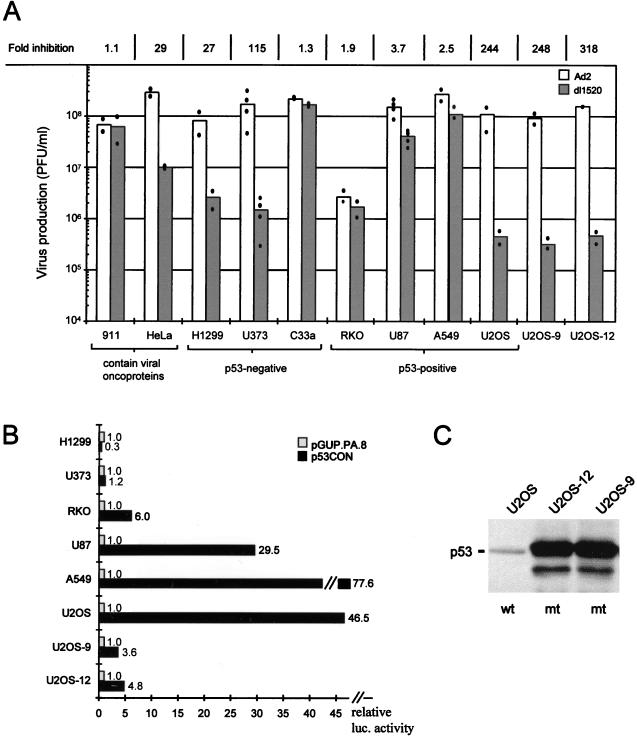FIG. 1.
(A) Replication efficiency of dl1520 (shaded bar) and wt adenovirus (Ad2) (open bar) in various cell lines, each with a different p53 status as indicated in the figure (p53 negative; p53 null [H1299] or mutant [U373 and C33a contain p53 codon 273 mutation]). U2OS-9 and U2OS-12 cells are clones of parental U2OS cells expressing mutant p53 (p53 codon 135 mutation). All cells were infected at an MOI of 1 PFU per cell with either Ad2 or dl1520, and virus production was measured at 72 h postinfection by plaque assay. Dots represent the average values of duplicate determinations of a single infection. The bars represent the mean of 2 to 4 independent infections. At the top of the column, the fold inhibition of dl1520 replication compared to Ad2 is given as the ratio of Ad2 titer (PFU/milliliter) to dl1520 titer (PFU/milliliter). (B) Determination of transcriptionally active endogenous p53 in various cell lines by transactivation of a p53-responsive reporter plasmid. Relative luciferase activities of p53-responsive reporter plasmid p53CON (solid bar) are expressed as the fold activation above the basic vector pGUP.PA.8 (shaded bar) after transfection of the indicated cells. The results represent the average values of at least three independent transfections, each performed in triplicate. (C) Detection of mutant p53 (p53mt; codon 135 mutation) in the U2OS-derived cell clones U2OS-9 and U2OS-12 by Western blotting.

